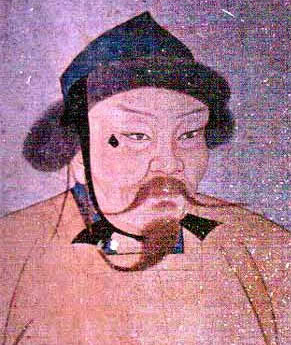
National Palace Museum, Taipei, Taiwan
Ögödei, Chinggis Khan's son and successor, presided over the greatest expansion of the Mongol empire.
During Ögödei's twelve year reign (1229-1241), the Mongols dramatically increased the territories under their control, moving from Central Asia into Russia in the 1230s and absorbing much of Russian territory. They also occupied Georgia and Armenia, and by 1234 they had destroyed the Jin dynasty of North China and occupied all of China north of the Yangtze river. They'd also moved into parts of Western Asia, particularly the eastern sections of Persia.
Among other accomplishments, Ögödei is credited with:
• building the first Mongol capital city at Khara Khorum
• devising the first regular and orderly system of taxation in the newly subjugated territories
• recruiting Muslims to assist in the financial administration of the empire
Persian historian Rashid al-Din portrays Ögödei as an easy-going, fun-loving, and bibulous ruler whose policies were supportive of trade, merchants, and crafts.
For Rashid al-Din's portrayal of Ögödei:
The Successors of Genghis Khan, translated from the Persian by John Andrew Boyle (New York: Columbia University Press, 1972).